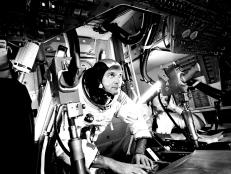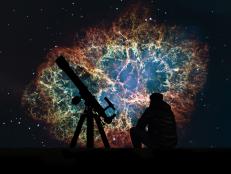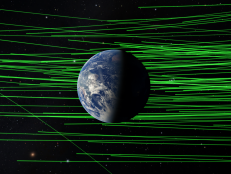All Space Articles
Showing 211 - 225 of 491 results
The Halloween Hunter’s Blue Moon Explained
There will be 13 full moons in 2020. Take that how you will, but the full moon coming up this Halloween night is a hunter's blue moon. So what does that mean?
Female Firsts: Meet Dr. Kathy Sullivan
In honor of Women's History Month, we're celebrating the achievements of women around the globe and throughout history. From the pages of The Explorers Journal, we're sharing stories from four women who broke boundaries in exploration, research, and science. In our final spotlight, meet the first American woman to walk in space and to reach the deepest known point in the ocean, Dr. Kathy Sullivan.
Get Celestial with Lowell Observatory LIVE!
Our friends at Lowell Observatory are serving up our solar system on a platter live!
Michael Collins, Apollo 11 Astronaut, Dies at Age 90
After a truly legendary life, NASA astronaut Michael Collins passed away at the age of 90. Michael was a vital member of the Apollo 11 mission to the moon in 1969 and a pioneer of space exploration.
Last Call for the King of Planets
This month Jupiter is entering conjunction which means it's the last chance this year to catch a glimpse of the largest planet in our solar system.
An Asteroid is Going to Kill Us All Before the Election... Or Not
So you may have heard the news by now that an asteroid is hurtling towards the Earth.
It’s Time to Say Goodbye to Arecibo
There aren’t a lot of telescopes that are also movie stars. In fact, I can think of only one: the famed Arecibo Observatory in Puerto Rico.
Check Out the Crab Nebula –The Leftovers from a Giant Cosmic Firework
The Crab Nebula sits 6,500 light-years away, and is currently about 11 light-years across. But while it looks pretty from afar, don’t give in to the temptation to visit it up close.
The Origin of Cosmic Cows
Keep reading, I'm serious... Yes, there is a certain kind of astronomical object called a “cow” and it’s actually pretty awesome.
The Future of Space Exploration
Over the past couple decades, the space-minded folks around the world have debated the relative merits of the two possible destinations for space exploration. Moon or Mars?
Astronomers See Flashes from Behind a Black Hole
Want to see what’s behind a black hole? Easy. You just…stare at it. The whole thing is pretty weird to contemplate, but an excellent example of the space-bending (and mind-bending) powers of black holes.
The Kuiper Belt: When Solar Systems Dance
Pluto isn't alone after all. Besides being the home of Pluto, the Kuiper belt hosts dwarf planets, and smaller bits of rock and ice.
Saving Earth from Killer Asteroids
Only about 40% of an estimated 25,000 near-Earth asteroids with the potential to destroy the planet have been detected. Scientist Dr. Ed Lu, along with his nonprofit B612 are working to create a way to detect the other 60%.
Space Hotel Built for Luxury and Research in Low Earth Orbit by 2027
Blasting off into low Earth orbit may not be every traveler’s idea of a quiet getaway, but builders of the first space hotel are creating the ultimate exclusive destination. Voyager Station is scheduled to be operational by 2027 and will offer $5 million luxury suites, fine dining, and live shows to space tourists.
The Night Sky is Part of Our Natural Environment
Most people in the United States have lost access to the night sky. This may not be a surprise to you if you’re living in a major metropolitan area. Perhaps you can pick out some of the brightest stars or a few planets on a clear night, but that’s it. Participate in International Dark Sky Week, April 22–30; their mission is to reduce light pollution and bring better lighting to communities around the world so that all life can thrive.


























